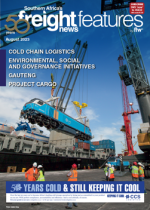Higher-intensity gales, f loods and heatwaves are adding more complexity and risk to the movement of project cargo.Experienced project logistics companies will factor in these risks as part of their planning, but the cargo owners and shippers are not always as aware of the potential for delays or loss of cargo.According to the Columbia Climate School Water Center, “neither public nor private sectors effectively mitigate the impact disasters have on the supply chain. “The private sector, especially, does not always consider natural hazards and disaster risks in their decision-making process. “As a result, the private sector’s vulnerability has the capacity to impact the entire economy”. Every stage in the project logistics chain is at risk. Writing for The Conversation, researchers Amani Rweyendela and William Mwegoha warn that “transportation infrastructure, such as roads and railway systems, is one of the sectors most threatened by climate change. “Extreme weather events – such as f looding, sea level rises and storm surges – repeatedly wreak havoc on transport net works.”Sea freight is also awash with risks. Nearly nine in 10 of the world’s major ports are exposed to damaging climate hazards, according to research recently published by the University of Oxford’s Environmental Change Institute (ECI).“We found 86% of all ports are exposed to more than three types of climatic and geophysical hazards,” says Jasper Verschuur, ECI researcher.These findings are supported by the Environmental Defence Fund (EDF).“Just as the Covid-19 pandemic threw our ports and the global supply chain into crisis mode, the climate emergency will have major consequences for international shipping,” says Marie Hubatova, senior manager for EDF's global transport team.En route from port of origin to destination, there is the ever-present risk of delays and damage to cargo due to storms at sea.Warmer waters create areas of low pressure, which in turn generate strong, gale-force winds and the resulting high seas.

